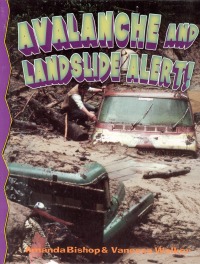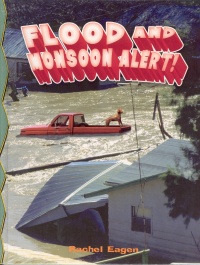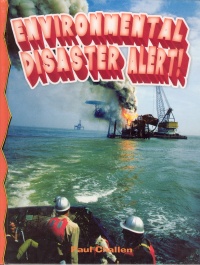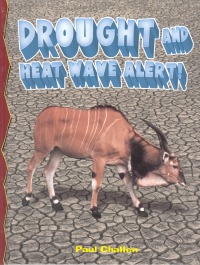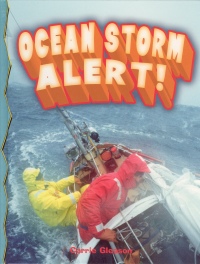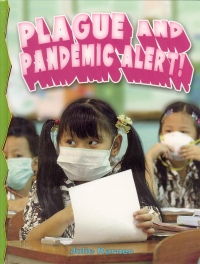| ________________
CM . . .
. Volume XI Number 20 . . . . June 10, 2005
excerpt:
Part of a 12-book series, these titles present abundant, current information about a variety of disasters, some of them natural, and others brought about by the actions of humans. The books, averaging 12 chapters each, have a table of contents, a glossary and index, and, with the exception of the title on plagues and pandemics, have a "Recipe for Disaster" section which provides instructions for a scientific experiment related to the book's main topic. Although some of the concepts are quite complex, generally the authors use explanations that are fairly simple and easy to comprehend. Maps, diagrams, photographs and illustrations, all suitably labeled, are plentiful and enhance the text. Many of the photographs, showing the devastation caused by the disasters, pack a visual and emotional punch. Avalanche and Landslide Alert! features the types and the development of avalanches and landslides, famous avalanches (an example being the one which occurred in 218 B.C. when Hannibal tried to cross the Alps), and the scientific research and technology used in predicting avalanches and landslides. (It is interesting to note that the number of avalanches and landslides is increasing because of people wanting to live or participate in sports on hills and mountains, despite their awareness of the risks involved. When trees and ground covers are removed to make room for houses and ski resorts, the "anchors" which block the paths of avalanches are no longer there.) Slide safety -- understanding the signs that indicate that a slope is prone to avalanches and landslides, having an evacuation plan and understanding emergency procedures -- is discussed along with rescue efforts and the common warning systems used throughout the world. The experiment at the back of the book shows readers how to make a mudslide using common household objects. Floods are the most destructive natural disasters on Earth. In Flood and Monsoon Alert! readers will learn about the causes of monsoons and floods (e.g. burst dams, glacier lake bursts, storm surges and seiches), famous floods, including Winnipeg's flood of 1950, safety measures and a flood's aftermath. The importance of forecasting monsoons is stressed because half the world's population relies on the rains brought by monsoons to grow their crops. Other topics include monsoon weather patterns, the differences between summer and winter monsoons, and the prevention of floods by erecting permanent barriers such as levees, dams, spillways and floodwalls. Humans cause environmental disasters that can be immediate or long term. Some of the topics featured in Environmental Disaster Alert! are water pollution (from industrial waste, the burning of fossil fuels that produce acid rain, and oil spills), the greenhouse effect (from overuse of aerosol sprays, coolants and the manufacture of certain plastics), chemical poisons (e.g. Agent Orange which was used during the Vietnam War) and soil erosion (caused by landmines weakening the soil and polluting the water with metal). There is also information about famous environmental disasters such as the explosion at the Chernobyl nuclear plant and the Exxon Valdez oil spill as well as sections devoted to environmental organizations and their work (some examples being cleaning up oil spills, restocking lakes and replanting forests), and suggestions for protecting the Earth, including recycling, conserving energy and making changes to vehicle designs to make them more fuel efficient and to help lessen air pollution. The causes of drought and drought's relationship to the water cycle are the main ideas in Drought and Heat Wave Alert! Though all droughts are meteorological, they are further categorized according to how they affect people and the water supply. This book discusses the differences between hydrological, agricultural and socioeconomic droughts, the latter being the most severe as people and animals have to move to find food and water. Other topics include heat waves and how asphalt and concrete in large cities contribute to global warming, the Dust Bowl and other famous droughts, the Heat Index (based on a combination of temperature and relative humidity) and water conservation through better farming techniques and the development of drought-resistant crops. The featured experiment will demonstrate the water cycle in a jar. Three main forces keep oceans moving: sunlight, winds and the Earth's rotation. Ocean Storm Alert! not only explains how these forces work, but it also covers different types of storms -- hurricanes, tropical storms and tsunamis -- as well as other dangers such as rogue waves, icebergs, whirlpools and fog. Ocean currents, such as El Nino, which most welcome in the colder climates of Canada, cause major shifts in weather patterns in other parts of the world, resulting in droughts, forest fires and breaks in the food chain. The book also highlights the development of warning systems for hurricanes and tsunamis, boat safety, types of sea rescue and clean up efforts following an ocean storm. Plagues, devastating, deadly and widespread infectious diseases, were almost unheard of until people began living in cities, close to one another and to garbage and waste. Plague and Pandemic Alert! describes the differences between endemic diseases (those that are always present in a population, such as colds, flu and chickenpox), epidemics (those that affect more people than usual and spread rapidly) and pandemics (diseases like AIDS, for example, that affect a huge geographical area). The causes of contagious diseases, how the human body tries to fight the invasion of bacteria and viruses, and the prevention of disease are explained as well. Readers will get current information on SARS, West Nile Virus, malaria and yellow fever and some other diseases, such as tuberculosis, which seem to be making a comeback. This series will be a great addition to any school or public library. Highly Recommended. Gail Hamilton is a teacher-librarian at Bird's Hill School in East St. Paul, MB.
To comment
on this title or this review, send mail to cm@umanitoba.ca.
Copyright © the Manitoba Library Association. Reproduction for personal
use is permitted only if this copyright notice is maintained. Any
other reproduction is prohibited without permission.
NEXT REVIEW
|TABLE OF CONTENTS FOR THIS ISSUE
- June 10, 2005.
AUTHORS
| TITLES | MEDIA REVIEWS
| PROFILES
| BACK ISSUES
| SEARCH | CMARCHIVE
| HOME |
